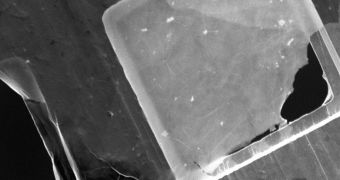A group of physicists and chemists at the Rice University announces the development of a new method to produce advanced compounds out of the weird form of bi-dimensional carbon called graphene. The new study shows promise for producing structures that leave material scientists in awe.
New metamaterials, high-strength fibers and nematic liquid crystals could be produced from 2D sheets of graphene that are stacked neatly on top of each other, but extremely thin. According to physicists, each graphene flake is just one-atom thick.
The Rice team started off by placing large flakes of graphene oxide in water. Once the two chemicals make contact, the carbon compounds start to come together in stacks, like pancakes. As more and more flakes rest on top of each other, the new material's chemical and physical properties change drastically.
Rice University and the University of Colorado investigators worked together on this investigation. Details of their work appear in this week's online issue of the scientific journal Soft Matter, which is published by the Royal Society of Chemistry.
In the nematic liquid crystals that experts obtain from the pancake-like stacks of graphene oxide flakes, the carbon particles themselves are floating freely, but are kept aligned, like inside a proper crystal.
What separates this investigation from other, similar ones, is the fact that the size and concentration on the graphene oxide flakes can be controlled so that their alignment is preserved when they are poured inside a gel. Such a gel can then be used as a substrate for the creation of metamaterials.
“Graphene materials and fluid phases are a great research area. From the fundamental point of view, fluid phases comprising flakes are relatively unexplored, and certainly so when the flakes have important electronic properties,” expert Matteo Pasquali explains.
He holds an appointment as a professor of chemical and biomolecular engineering. and of chemistry, at the Rice University, and was also one of the authors of the Soft Matter paper. The Rice T.T. and W.F. Chao Chair in Chemistry, James Tour, was also a part of the research.
“From the application standpoint, graphene and graphene oxide can be important building blocks in such areas as flexible electronics and conductive and high-strength materials, and can serve as templates for ordering plasmonic structures,” Pasquali explains.
“The exciting part for me is the spontaneous ordering of graphene oxide into a liquid crystal, which nobody had observed before. It's still a liquid, but it's ordered. That's useful to make fibers, but it could also induce order on other particles like nanorods,” Rice graduate student Natnael Behabtu concludes.

 14 DAY TRIAL //
14 DAY TRIAL //